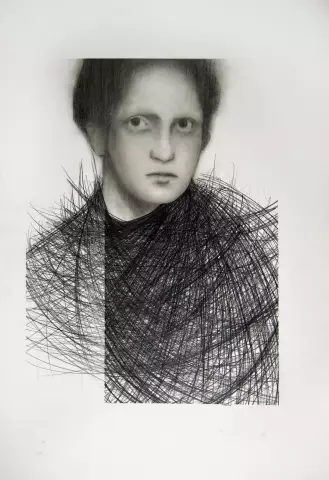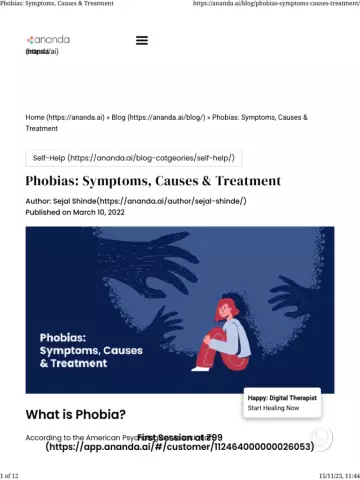- Author Rachel Wainwright [email protected].
- Public 2023-12-15 07:39.
- Last modified 2025-11-02 20:14.
Agnosia

Agnosia is a disease characterized by a violation of certain types of perception, resulting from damage to the cerebral cortex and adjacent subcortical structures.
When the projection (primary) parts of the cortex are disturbed, sensory disorders (hearing loss, impaired visual and painful functions) occur. In the case when the secondary sections of the cerebral cortex are affected, the ability to perceive and process the information received is lost.
Auditory agnosia
Auditory agnosia results from damage to the auditory analyzer. If the temporal part of the left hemisphere was damaged, then phonemic hearing is impaired, characterized by a loss of the ability to distinguish the sounds of speech, which can lead to a disorder of speech itself in the form of sensory aphasia. In this case, the patient's expressive speech is a so-called "verbal salad". Dictation and reading aloud may also be impaired.
If the right hemisphere is damaged, the patient ceases to recognize absolutely all sounds and noises. If the anterior parts of the brain are affected, then all processes proceed with the preservation of the auditory and visual systems, but with a violation of general perception and the concept of the situation. Most often, this type of auditory agnosia is observed with mental illnesses.
Arrhythmia of auditory agnosia is characterized by an inability to understand and reproduce a certain rhythm. Pathology manifests itself when the right temple is affected.
A separate type of auditory agnosia is a process that manifests itself in a violation of understanding of the intonation of speech of other people. It also occurs with a right-temporal lesion.
Visual agnosia
Visual agnosia is a violation of the ability to recognize objects and their images with complete safety of vision. It occurs with numerous lesions of the occipital cortex. Visual agnosia is divided into several subtypes:
- Simultaneous agnosia is a violation of the ability to perceive a group of images that form a single whole. In this case, the patient can distinguish between single and complete images. It develops as a result of damage to the area where the junction of the occipital, parietal and temporal lobes of the brain occurs;
- Color agnosia is the inability to distinguish colors while maintaining color vision;
- Letter agnosia is the inability to recognize letters. This pathology is called "acquired illiteracy". When speech is intact, patients can neither write nor read. It develops when the dominant hemisphere of the occipital region is damaged.
Tactile agnosia

Tactile agnosia is a violation of the recognition of shapes and objects by touch. Appears after damage to the parietal lobe of the right or left hemispheres. There are several types of agnosia of a similar nature:
- Subject agnosia is a pathology in which the patient cannot determine the size, shape and material of an object, while he is able to determine all of its signs;
- Tactile agnosia - inability to recognize letters and numbers drawn on the patient's hand;
- Finger agnosia is a pathology characterized by a violation of the definition of the names of the fingers when touching them with the patient's eyes closed;
- Somatoagnosia is the inability to identify parts of the body and their location in relation to each other.
Spatial agnosia
Such a type as spatial agnosia is characterized by the inability to recognize spatial images and orientate oneself in place. In such situations, the patient cannot distinguish right from left, confuses the location of the hands on the clock and changes the letters in words in words. It manifests itself as a result of damage to the dark-occipital lobe. Diffuse disturbances of cortical structures can lead to a syndrome in which the patient ignores half of the space. With this variant of spatial agnosia, he completely does not notice objects or images located on one side (for example, on the right). During redrawing, he only depicts part of the drawing, saying that the other part does not exist at all.
Anosognosia
Among all other forms of this pathology, a special type of agnosia is distinguished - the so-called anosognosia (Anton-Babinsky syndrome). This pathology is characterized by the patient's denial of his illness or by a reduced criticality of his assessment. Occurs with lesions of the subdominant hemisphere.
Diagnosis, treatment and prognosis for agnosia
Agnosia is diagnosed in the course of a comprehensive neurological examination; its exact form is revealed using special tests.
Treatment of this symptom complex occurs in the course of treatment of the underlying disease, and therefore has significant variability. As well as treatment, the prognosis depends on the severity of the underlying pathology. In medical practice, cases are described, both of spontaneous cure of agnosia, and of a prolonged course of the disease, almost lifelong.
The information is generalized and provided for informational purposes only. At the first sign of illness, see your doctor. Self-medication is hazardous to health!






